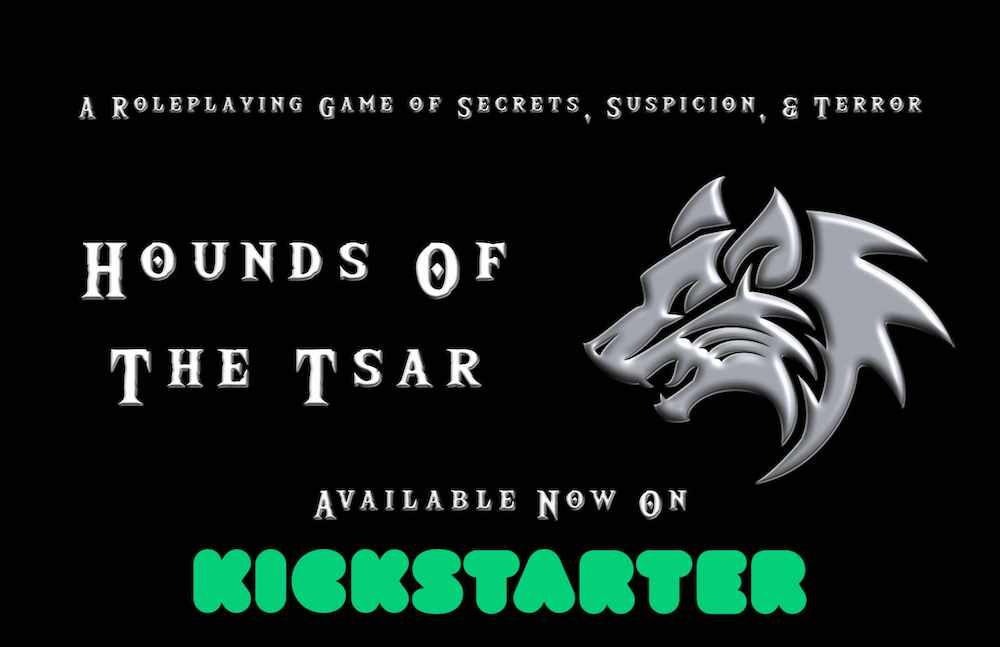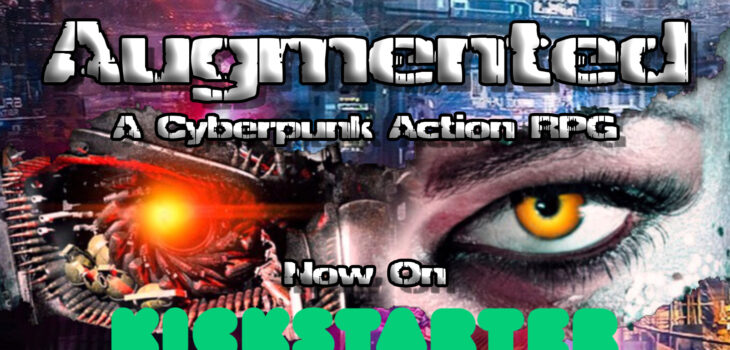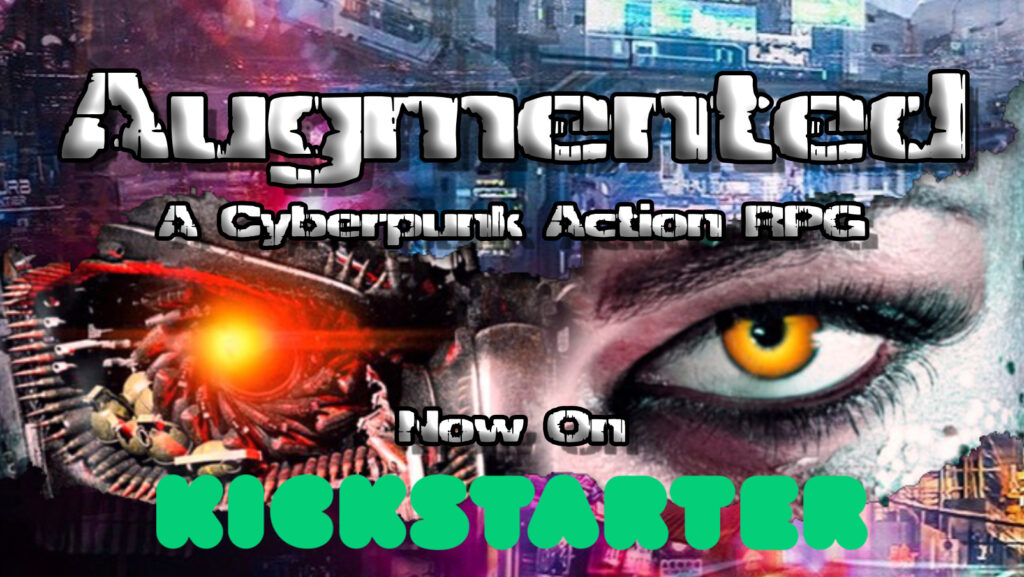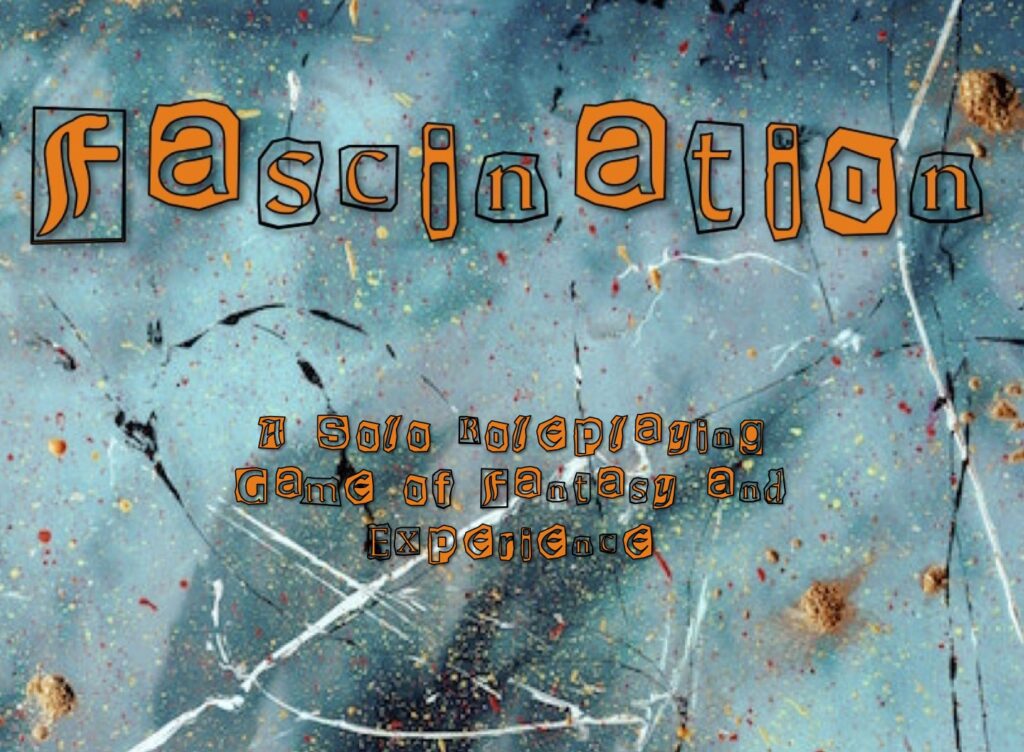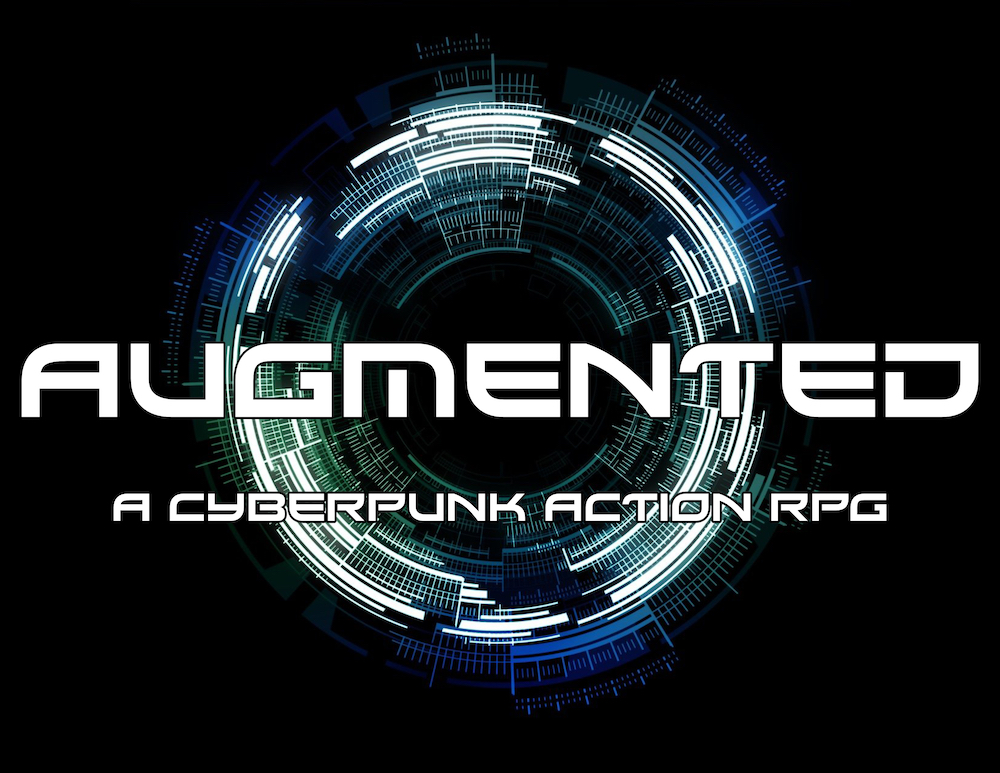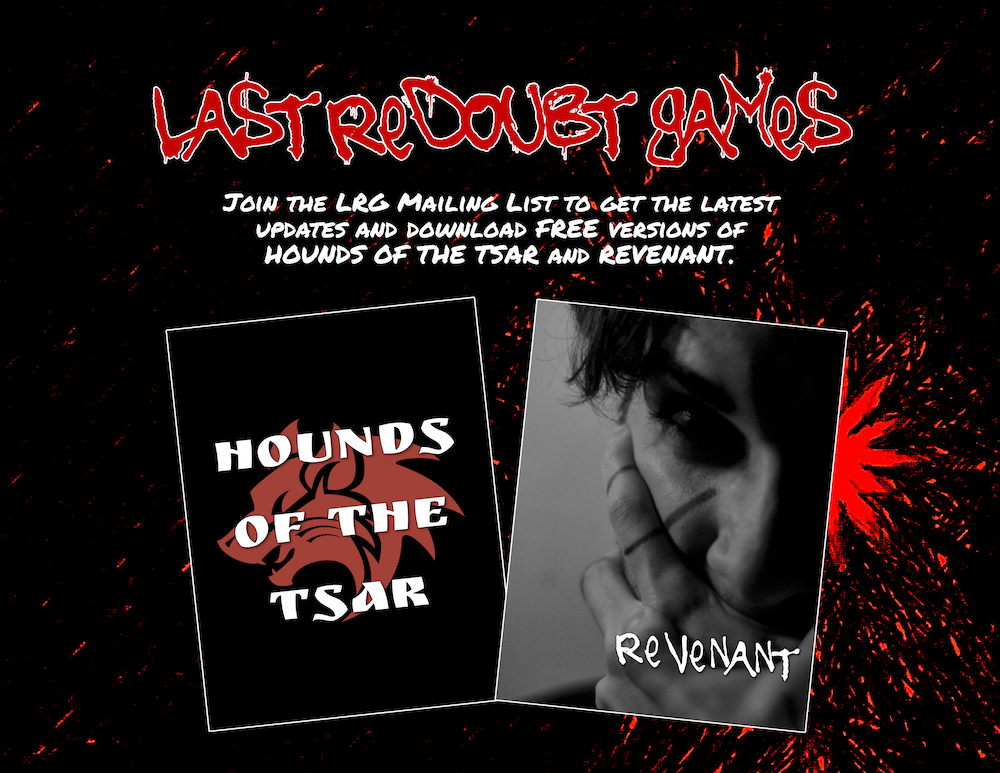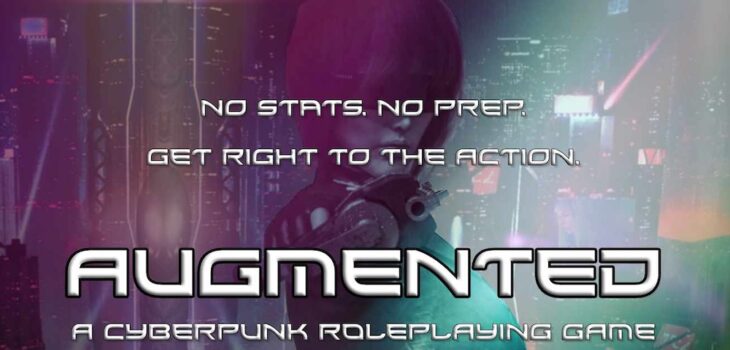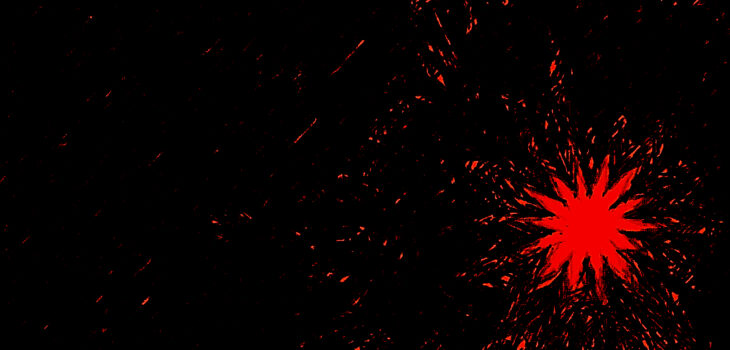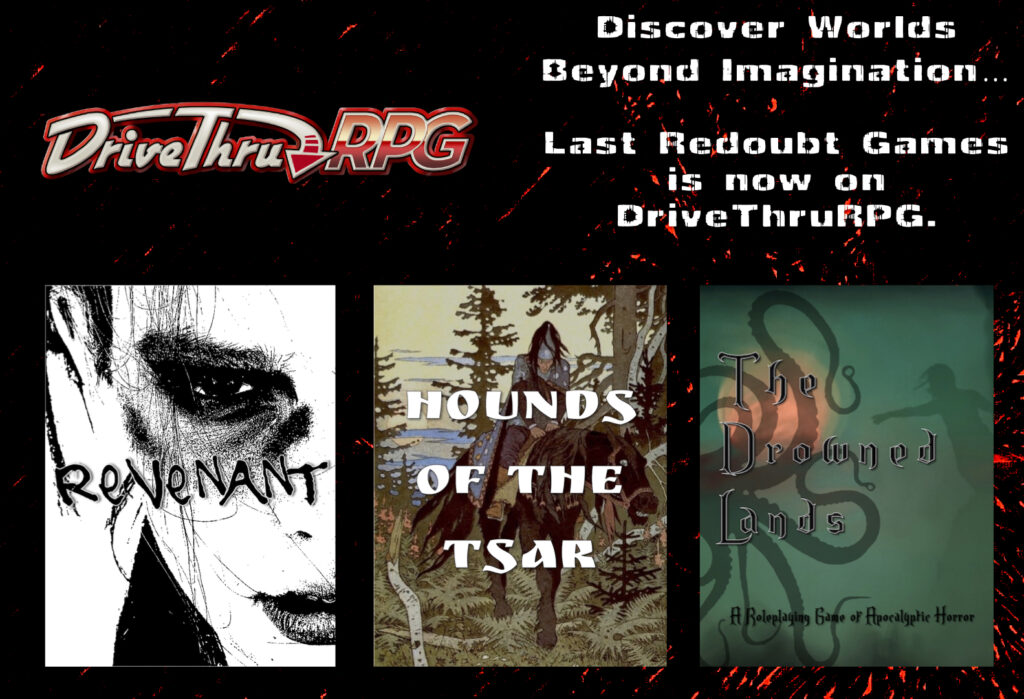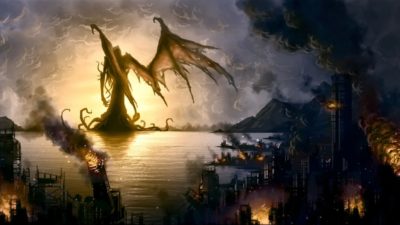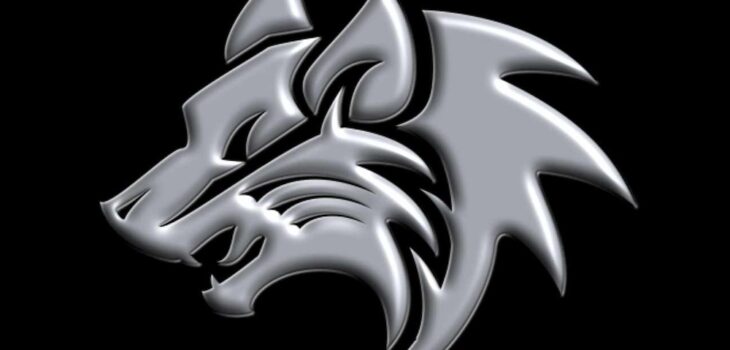 News & Updates
News & Updates
The Long Journey of HOUNDS OF THE TSAR
Hounds of the Tsar recently launched on Kickstarter to fund the very first print edition of the game. This is the third Kickstarter I’ve run this year, which has proven to be quite an active one for my little one-person game studio. Since this particular game has been available in digital form for almost a year, I thought it would be worthwhile to take a look at how we got to this point.
Humble Origins
As one of the “original” Last Redoubt Games projects, Hounds of the Tsar (HotT) has been around in one form or another for quite a long time. If my memory is accurate (a questionable assumption these days), the game’s origins date back to at least 2014 when I pitched an idea for a convention game session using the Lamentations of the Flame Princess rules. The concept was that you would play as monster hunters in the service of Ivan the Terrible in 16th century Russia. Of course, my first mistake was not making it a Pathfinder game, considering this was back in the heyday of Pathfinder Society completely dominating smaller conventions. But Pathfinder would have been a poor fit for the concept I had, which was a dark and gritty game where death was always on the table.
It wasn’t long afterwards that I started thinking about turning HotT into a standalone game. I was really into a lot of the OSR games coming out around that time (2015 or so) and I thought the concept would fit neatly with a “rules-lite” approach that used a lot of random tables to quickly roll up unique characters. I don’t quite remember whether the core rule mechanic came before the qualities and backgrounds, but I scribbled down a bunch of lists on a notebook while my kids were at a theater rehearsal a few nights every week and the game quickly took shape.
Rules Development
The core rule mechanic of rolling 3d6 and getting under an attribute to succeed came primarily from GURPS, while the idea of using static skills to reroll dice was something I’d been tinkering with for the game that would eventually become Wyld Sea. Rules for combat and other situations were very rudimentary at that point. At some point over the next year as I tinkered with the game some more, I read Into the Odd and incorporated its “auto hit” combat mechanic as well as the concept of reducing a physical attribute value when characters ran out of hit points.
Two unique elements were also added to the game around this time. The first was the Tsar Die, which is quite a simple concept, really. If the player could somehow invoke the tsar in the task they were performing, they could roll a d4 to influence the test. It’s a minor system, but it greatly tilts the odds because the die essentially gives players a 1-in-4 chance of success. It also creates the opportunity for a negative impact if the test itself fails. While the Tsar Die concept would be expanded when I adapted the game system for The Drowned Lands, in HotT, it mostly serves to constantly remind the players of their connection to the tsar.
The other unique element was the loyalty system, which measures how much the characters trust each other and whether or not they can accuse someone of treason. At one point, the system was much closer to the one used in the game Cold City, which is a fabulous indie game from the UK by Malcolm Craig (who also designed a|state, a big influence on my novel, Blackspire). Ultimately, I decided to scale it back into something that didn’t have much impact on in-game play, but forced players to constantly watch each character for signs of disloyalty. In a happy design accident, I’d already built concepts like secrets and goals into the character creation, so there was already the potential for conflict built right into the game.
Mechanically, the last building blocks that went into place were the elements of the magic system. While the game gives a sample spell list, even this was something of a concession I didn’t want to make. In my ideal world, players would simply create their own spells using the loose rules provided. When I adapted the system for The Drowned Lands, I created additional tools to make it easier to build unique spells, but I actually ended up being happy with the spell list in HotT. It’s simple, open-ended, and thematically appropriate for the setting, which was important considering the unique characteristics of the game’s alternate history Muscovy.
Not What My Grad Advisor Intended…
Which brings us to the setting.
Most of my history graduate studies focused on 17th century Russia, but I was pretty familiar with the era of Tsar Ivan IV (better known in the West as Ivan the Terrible). I’d already used a lot of that knowledge to build the world of Rostogov, the fantasy setting for my first two novels (The Walls of Dalgorod and Mirona’s Law). For HotT, though, I wanted to be much more grounded in real history without suffocating the players with detail. The final result ended up being only a few pages in length, but I think it’s packed with enough detail to help nail the right atmosphere, which is far more important than historical accuracy in a game like this.
I did decide, however, to include a bibliography for people who wanted to learn more about early Russian history. It’s a modest mixture of primary and secondary sources that would pretty much be required reading for any course in pre-Petrine Russia (the era before Peter the Great, who reigned from 1682-1725 and fundamentally transformed Russian politics and society). Of course, I also included a section on Sergei Eisenstein’s legendary Ivan the Terrible films, which are probably a better frame of reference for the look and feel of a HotT game than any book.
Road to Release
By 2017 or so, the game was more or less complete. Around that time I started dipping my toe into formatting and layout, although that basically meant structuring the Word file text in columns and inserting some pictures here and there. I tinkered with it intermittently throughout the next two years and posted various versions on my old website as “playtest demos,” which was kind of code for “I think this is good but I’m afraid to release it as a real thing.”
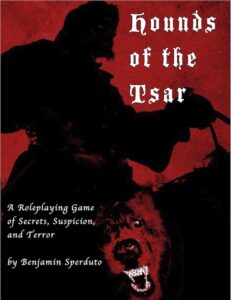
In 2020, I finally got serious about formatting and preparing the game for actual release. As part of that effort, I spent a lot of time tracking down public domain artwork by 19th and early 20th century Russian artists to give the game an authentic feel. As part of this broader effort, I also cleaned up a lot of the writing and filled in a lot of existing gaps. I released the game on itch.io in early December. While it wasn’t a runaway success by any stretch of the imagination, I got some good feedback about the game, which convinced me it was worth spending some more creative time and energy on making RPGs.
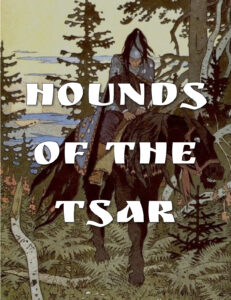
Print Edition Revision and Kickstarter
So Why a New Version?
The original version of HotT was laid out using the publisher view for Microsoft Word 2011, which probably would have been an outdated solution in 2011, much less 2020. Among the bigger problems were the use of multiple low resolution images and a lack of a spread view that let me spread images across two facing pages. More importantly, though, was an issue born of my own ignorance. All of the games I’ve printed have used the conventional zine format (5.5 x 8.5), which is kind of the standard size for most indie releases. Unfortunately, I didn’t know this when I started doing the layout, which meant the game was formatted for an 8.5 x 11 page. While I actually did have a copy printed just to see what it looked like, it wasn’t a viable format if I had any intention of printing the game in larger numbers.
When I finally sat down to reformat the game in Affinity Publisher, I took the opportunity to make a number of additional changes. The biggest change was the artwork. A lot of pieces were scattered rather haphazardly through the original release, and there were some stylistic discrepancies that gave the game something of a cobbled together feel. The reformatted version is much more consistent from a layout and art standpoint. I also reorganized a lot of the content to make the game easier to reference at the table.
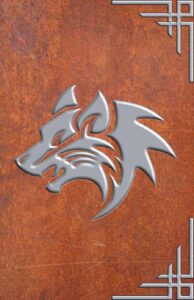
After all that work, it seemed like a bit of a letdown to simply release the new version digitally and move on. I’d always wanted to do a print run, so I decided to put together a new Kickstarter campaign for it. Now that you know a bit more about the background of the game, you can follow the project and help make it a reality! The Hounds of the Tsar Kickstarter will be running through October 26, so be sure to check in on the campaign’s status in the coming weeks as it works towards its funding goal!
